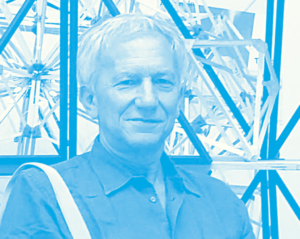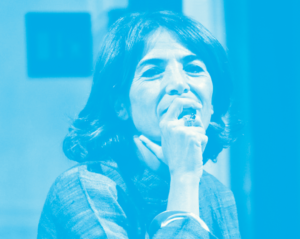Jury

Giuseppe Furlanis
He chaired the National Design Table and the Conference of Presidents and Directors of ISIAs. In 1995, he began his collaboration with the Ministry of Foreign Affairs in international cooperation projects oriented toward design education. He coordinated the first technical table on restoration activated by the AFAM-MUR General Directorate and served on committees for the development of the fashion sector promoted by the MISE and MiBACT ministries.
He was president of the National Academy of Dance and of the Scientific Committee of Opera Academy Verona.
He has curated numerous conferences and exhibitions in the field of design, taking particular interest in the themes of ecology and sustainable development.

Antonella Andriani
Two master’s degrees, in Industrial Design at the Politecnico di Milano and in Eco-efficient Product Design at the Politecnico di Torino, and an ASP – Alta Scuola Politecnica postgraduate diploma. Strategic Designer, she is active in defining development programs, ranging from product design to visual communication and exhibition design. She works in international contexts to enhance Italian design. From 1989 to 2002 she was project manager of ICT projects for the development of financial products and services as an employee of Rasfin – now Allianz Group, Fiditalia, JPMorgan, Database Progetti.
Since 2005 she has taught in the School of Design of the Poltecnico di Milano and since 2009 in the Design Schools of the Accademia di Belle Arti di Verona, where she has established the master’s degree in Italian Strategic Design.
Vice President of ADI since 2020, she is on the Board of Directors of the Fondazione ADI Collezione Compasso d’Oro; since 2015 she has been a member of the ADI Permanent Design Observatory.
The AFAM design soul is found in the world of ADI Associazione per il Disegno Industriale (Association for Industrial Design) through the many members – schools, professors, students, and designers – who share the aspiration of building a prosperous future together through quality projects. A quality that today must deal with an international context that is still extremely difficult due to environmental and war emergencies. So, Design, that has always been devoted to responsible progress and too often still associated only with the aesthetic dimension, can be a very powerful tool for well-being, peace, and development.
And it is precisely the academic world that has the responsibility of guiding the training of new generations of designers so that they can keep the fire of Italian design alive and fuel that proactive energy that has at heart the protection of society and the Universe according to a multiethnic, multicultural, free, and no-longer-just-anthropocentric vision.

Marco Bonetto
Marco Bonetto was born in Milan in 1962. In 1983, he began his activity in design in the studio of his father Rodolfo Bonetto, one of the founding fathers of Italian design. In 1991, after the death of his father, he continued to lead Bonetto Design, created the exhibition “Rodolfo Bonetto thirty years of design.” In 1992 he conceived and presided over the award dedicated to students ” Targa Rodolfo Bonetto”, participated in numerous design juries including the “Gold National Award of Excellence”, Taiwan. From 1998 to 2003, he was lecturer at Politecnico di Milano, Faculty of Industrial Design, from 2001 to 2004 president of Smau industrial design award. From 2002 to 2007 Director of Master Car Design Scuola Politecnica di Design, Milan, in 2002 Board Member of Design Index, Adi. From 2008 to 2011 Director of Master Car Design Domus Academy, Milan; since 2011 Director of design center freestanding Candy Group. From 2014 to 2015 Technical Director of HA Household Appliances magazine. In 2016 Founder and President of the Rodolfo Bonetto Onlus Association. From 2016 to 2019 Professor at the Academy of Fine Arts, Brera, Milan. In 2016 he published the book 2904 Check-In. From 2017 to 2019 he was a member of the ADI Executive Board (Association for Industrial Design). From 2018 he has been member of the scientific committee of MDO Montecarlo Award 2018 and a Jury member for Compasso d’ Oro Award for Lifetime Achievement. In 2019 he founded the Bonetto Design Academy, in 2020 he wrote the book Designer di Successo.
The history of Italian design offers us an extraordinary design production.
Designers were often ahead of their time, offering futuristic visions of design. For the great masters of design to express innovative thinking was natural, always supported by companies that invested in research and experimentation.
This defined the historical currents of thought in Italian design that unfortunately stopped in the 1990s in the face of a trivialization of creativity and an overbearing acceleration of consumerism, a kind of frenzy that drastically shortened the life of products.
Electronics, technology and various innovations force the rapid design of products that must comply with countless industrial constraints for markets with different characteristics.
New challenges for design? Certainly, design will have to face new lifestyles, and new territories (space, planets), extraordinary challenges where there will always be man as user, who will always need a product that contains a story and an experience.

Virginio Briatore
Virginio Briatore, born in Piedmont (1955) is a design philosopher and observer of contemporary style. He has held workshops and seminars on these topics both in Italy and abroad, has published 11 books, at least 500 articles and coordinated research and workshop-competitions for Lavazza, Epson, Samsung, Citroën, Martini&Rossi, JVC, Dainese, Guzzini, Safilo, Whirlpool, Panasonic. Since 2007 is design consultant at Lavazza spa. Since 2013 is strategy consultant at Lago spa. He wrote for INTERNI, MODO, D. La Repubblica delle Donne, Casaamica + Io Donna/Corriere della Sera, Surface + Graphis (NY), Design Week (UK), DAMn° (Bruxelles), CasaVogue Brasil.
On behalf of the magazine MODO, I began monitoring design schools in the early 1990s. At that time there was almost only talk of product design, applied mostly to furniture and automotives.
Today, evaluating the projects received, I note with satisfaction that the fields of teaching and application embrace the whole of life: the body, health, nourishment, work, play, travel, reuse and the conscious choice of matter, thus fulfilling one of the foundations of existence, whether individual or collective: taking care of oneself, others and the world.

Daniela Piscitelli
Tenure Professor of Communication Design at the University of Campania “Luigi Vanvitelli”. She deals mainly with Communication for emergency; communication for cultural heritage and territories; languages and visual cultures of the contemporary age. The Visual Communic-ethic Code Laboratory consolidates research related to the writings of complexity as horizons around which to build tools for the visual transcription of information, for the processing, acquisition, transfer and management of knowledge, useful to imagine alternative models of access to knowledge. She is Vice President SID – Italian Scientific Society of Design and World Regional representative for IIID – International Institute for Information Design. Former secretary general ICOD, International Council of Design as well as vice president (2017 – 2022); member of the Study Commission for the Identification of Support and Development Policies for Design of Mibac and of the Technical Table on Design of MIUR; National President AIAP – Italian Association of Visual Communication Design (2009 – 2015).
The utopia of modern thought, to control the world in its entirety, through predefined categories such as standardisation, synchronisation, precision and linearity has failed. Just as the belief that the planet’s energies were infinite, the space to be occupied infinite, the time available infinite, was debunked. But also to a permanent state of exception that, through moments of uninterrupted transitions, puts meanings, visions, perspectives and processes back into play.
The post-digital nature in which we are immersed interprets the human presence as a bit within a larger ecosystem, and traces it back to a more fallacious dimension, tiny in a magma that reveals itself to us as a dense structure, a complex and connected ecosystem made of nature, humanity, objects, devices, humanoids, symbionts, data and buzz atmospheres subjected to a continuous state of acceleration: natural, social, technological. But also to a permanent state of exception that, through moments of uninterrupted transitions, puts meanings, visions, perspectives and processes back into play. The very location of man, in such prefigured environments, is no longer central to the dynamics and relationships, but becomes a bit within a larger ecosystem.
Such a defined scenario leads design to shift its gaze no longer to the human species alone but to a ‘more-than-humans’ multiverse, susceptible to continual interference, eye-gaps, sudden reversals. In this constantly simmering plankton, the role of design can only be to trigger critical reflections, to destabilize relationships given as a priori, to transcend the material dimension of artifacts in order to position oneself in the liminal space between humanistic and technological thought within which the culture of living leaves its object condition to become a narrative of a new human condition, more-than-human.
¹ The title echoes Georges Perec’s novel, Life: a User’s Manual BUR, 1984
